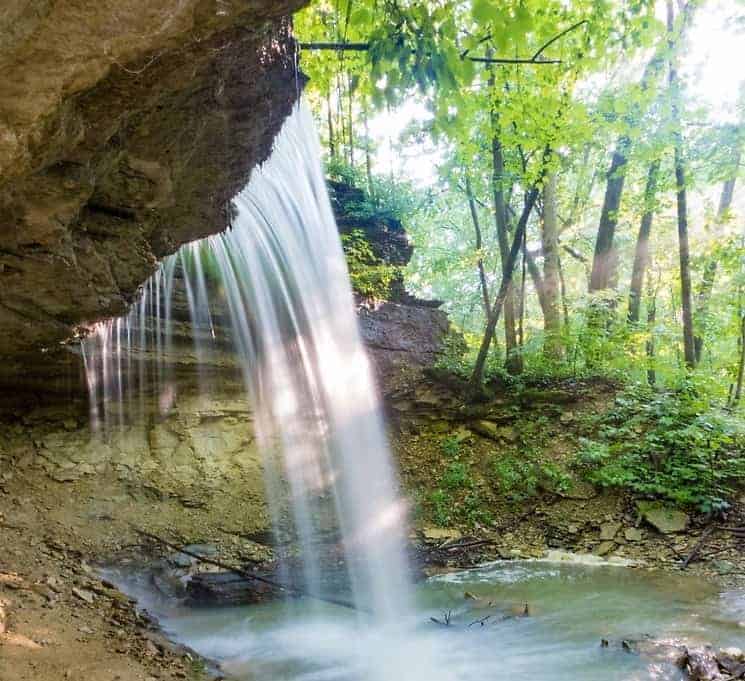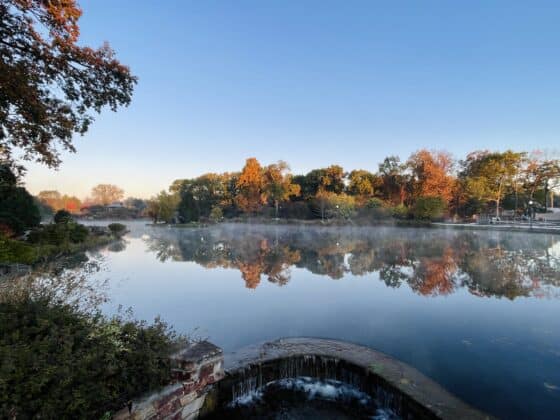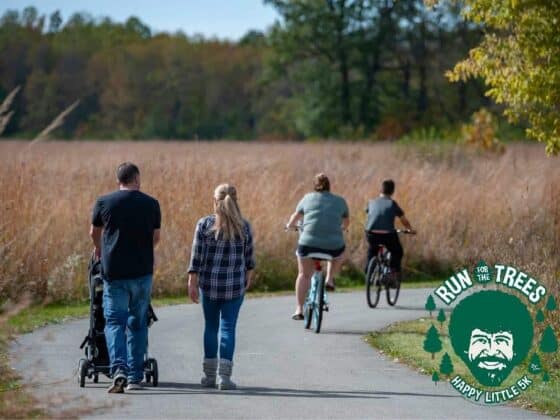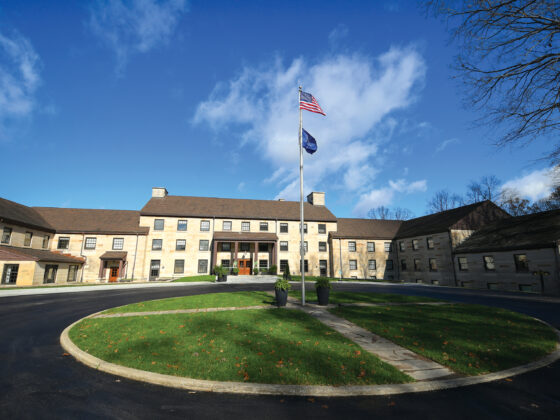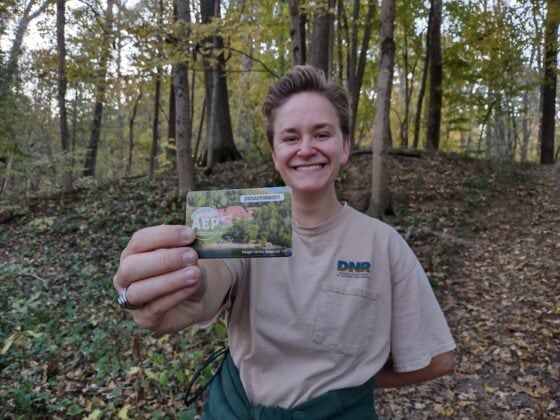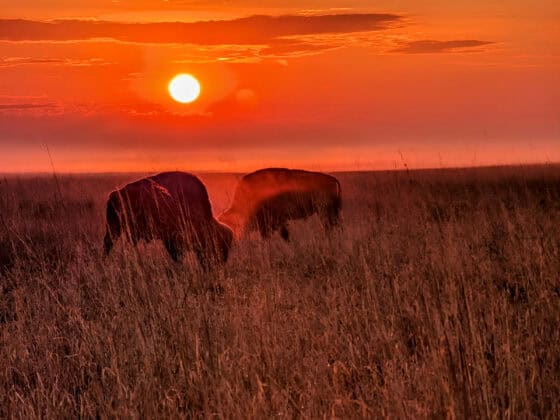Story by Glenda Winders
One of the lessons of the pandemic year has been how much beauty and diversity can be found out of doors and close to home. Thanks to the glaciers that shaped Indiana’s landscape, the state has more opportunities than many others to explore Mother Nature’s creations. Rivers and lakes beckon, and so do the dramatic waterfalls that punctuate them.
“The waterfalls you can enjoy at Indiana state parks, state forests and nature preserves are good reasons to be reminded that Indiana is more than a ‘fly-over’ or ‘drive-through’ state,” said Ginger Murphy, deputy director at the Indiana Department of Natural Resources Division of State Parks. “These cascades are a reminder of the geological processes that framed (and are still framing) the Hoosier landscape.”
Clifty Falls State Park near Madison was named for its most spectacular features – roaring Clifty Falls, Little Clifty Falls, Hoffman Falls and Tunnel Falls. Hike through a rugged landscape on the park’s 10 miles of trails to discover them and other smaller ones, as well. As with all waterfalls, the activity at these falls depends on the amount of rainfall in the area. And their personalities change, depending on the time of your visit. Spring will find them cascading at full force while in winter they become a frozen spectacle.

Upper and Lower Cataract Falls are the largest in the state by volume. A part of Mill Creek, which feeds the 1,400-acre Cagles Mill Lake in the Cataract Falls State Recreation Area near Cloverdale, they were formed because of pre-glacial bedrock ridges buried beneath ancient lake sediments. Also here are volleyball courts, a swimming pool and a playground as well as lots of tables for lunch while you watch the activity around you. Be sure to pack a picnic!

Not far away near Spencer is McCormick’s Creek State Park, the first in the state. Here the namesake creek flows through a limestone canyon to form the scenic waterfall, and nature-lovers will find lots more to do, too. Miles of hiking trails lead through trees and native wildflowers, and you can also climb a vintage fire tower and cross the stone-arch bridge built by the Civilian Conservation Corps. It’s a good place for bird-watching, too.
Turkey Run State Park near Marshall and Shades State Park near Waveland are 15 miles apart, but Sugar Creek runs through both of them. On the north side of the creek in Turkey Run is Rocky Hollow Falls Canyon Nature Preserve, and in Shades lies the Pine Hills Nature Preserve. These parks are best known for their great hiking through deep sandstone ravines, and along the way you’ll discover Silver Cascades and other smaller waterfalls.

Charlestown State Park was once part of the land around an Army ammunition plant, but today it offers fantastic hiking along rugged hills
and deep ravines. You’ll discover a substantial waterfall at Charlestown Landing, and as you move along the trails you’ll come upon several other smaller ones as streams flow down to Fourteenmile Creek and the Ohio River. Nearby is Nine Penny Branch Nature Preserve, a stand-alone dedicated nature preserve with terrain similar to the park’s. Nine Penny Run wends through it, leaving limestone slabs, waterfalls, pools and riffles in its wake.

PHOTO: Visit Wabash County
Spring Mill State Park near Mitchell was an industrial village in the early 1800s. Settlers came here because of cave springs that provided a constant source of water to operate a sawmill, a wool mill and a distillery with a gristmill at the center of it all. While you explore the restored Pioneer Village look for the sign just past the leather shop that guides you to Hamer Cave. A short walk in that direction will take you to a magnificent waterfall and the flume that carried water to keep the mill running. While you’re here check out the memorial to Gus Grissom, the astronaut whose home was in this area.
Salamonie River State Forest near Lagro in Wabash County also has a rich history and is named for a Native American word meaning “yellow paint.” It was created as a demonstration of how land on river bluffs that had largely eroded away could be reclaimed, with much of the work done by the Civilian Conservation Corps in the 1930s. Hiking and horseback-riding trails abound, and below the Salamonie Dam is a waterfall in a ravine that flows into the Salamonie River.
Anderson Falls Nature Preserve in Bartholomew County is a 44-acre county park through which flows a half-mile stretch of the Fall Fork of Clifty Creek. Geologists know this park for the fossils of Silurian Age animals captured in the Waldron Shale layer here, and where the Louisville limestone area overlaps that layer is where you’ll find the 14-feet-high waterfall that gives the site its name.
In Richmond, Thistlethwaite Falls was voted one of the top waterfalls
in Indiana. It was created in the early 1800s when Timothy Thistlethwaite blasted a new channel in the West Fork of the Whitewater River to provide more waterpower to his nearby sawmill. It’s located just south of Waterfall Road near Springwood Park.
Other photo-worthy waterfalls include Muscatatuck Falls in Jennings County and Deadman Falls in Jefferson County.
“All of these waterfalls are accompanied by great displays of wildflowers in the spring; the reds, yellows and oranges of forested slopes in fall; and unique ice formations in winter,” Murphy said. “They are each worth visiting to enjoy in any season.”


